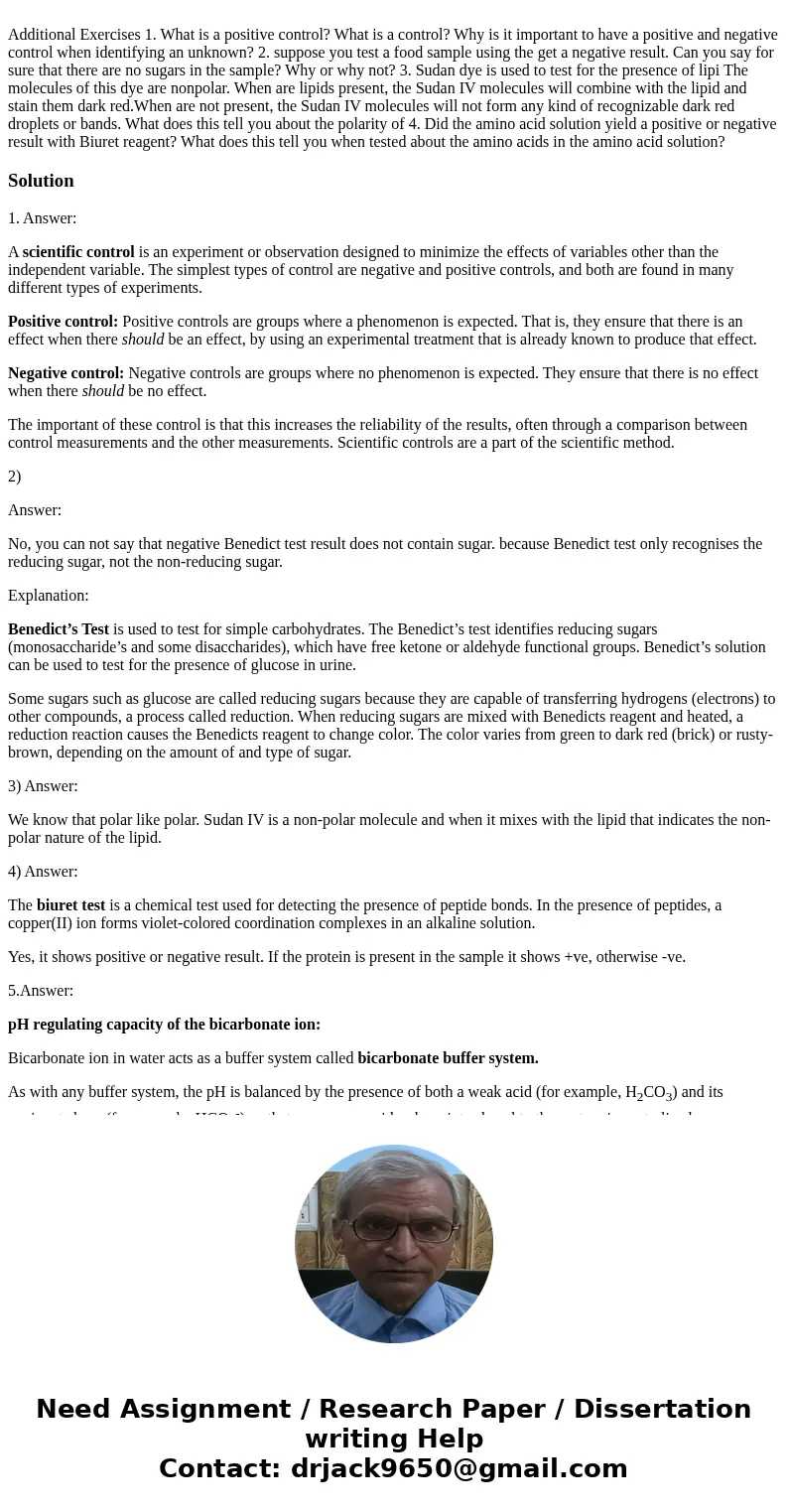Additional Exercises 1 What is a positive control What is a
Solution
1. Answer:
A scientific control is an experiment or observation designed to minimize the effects of variables other than the independent variable. The simplest types of control are negative and positive controls, and both are found in many different types of experiments.
Positive control: Positive controls are groups where a phenomenon is expected. That is, they ensure that there is an effect when there should be an effect, by using an experimental treatment that is already known to produce that effect.
Negative control: Negative controls are groups where no phenomenon is expected. They ensure that there is no effect when there should be no effect.
The important of these control is that this increases the reliability of the results, often through a comparison between control measurements and the other measurements. Scientific controls are a part of the scientific method.
2)
Answer:
No, you can not say that negative Benedict test result does not contain sugar. because Benedict test only recognises the reducing sugar, not the non-reducing sugar.
Explanation:
Benedict’s Test is used to test for simple carbohydrates. The Benedict’s test identifies reducing sugars (monosaccharide’s and some disaccharides), which have free ketone or aldehyde functional groups. Benedict’s solution can be used to test for the presence of glucose in urine.
Some sugars such as glucose are called reducing sugars because they are capable of transferring hydrogens (electrons) to other compounds, a process called reduction. When reducing sugars are mixed with Benedicts reagent and heated, a reduction reaction causes the Benedicts reagent to change color. The color varies from green to dark red (brick) or rusty-brown, depending on the amount of and type of sugar.
3) Answer:
We know that polar like polar. Sudan IV is a non-polar molecule and when it mixes with the lipid that indicates the non-polar nature of the lipid.
4) Answer:
The biuret test is a chemical test used for detecting the presence of peptide bonds. In the presence of peptides, a copper(II) ion forms violet-colored coordination complexes in an alkaline solution.
Yes, it shows positive or negative result. If the protein is present in the sample it shows +ve, otherwise -ve.
5.Answer:
pH regulating capacity of the bicarbonate ion:
Bicarbonate ion in water acts as a buffer system called bicarbonate buffer system.
As with any buffer system, the pH is balanced by the presence of both a weak acid (for example, H2CO3) and its conjugate base (for example, HCO3-) so that any excess acid or base introduced to the system is neutralized

 Homework Sourse
Homework Sourse